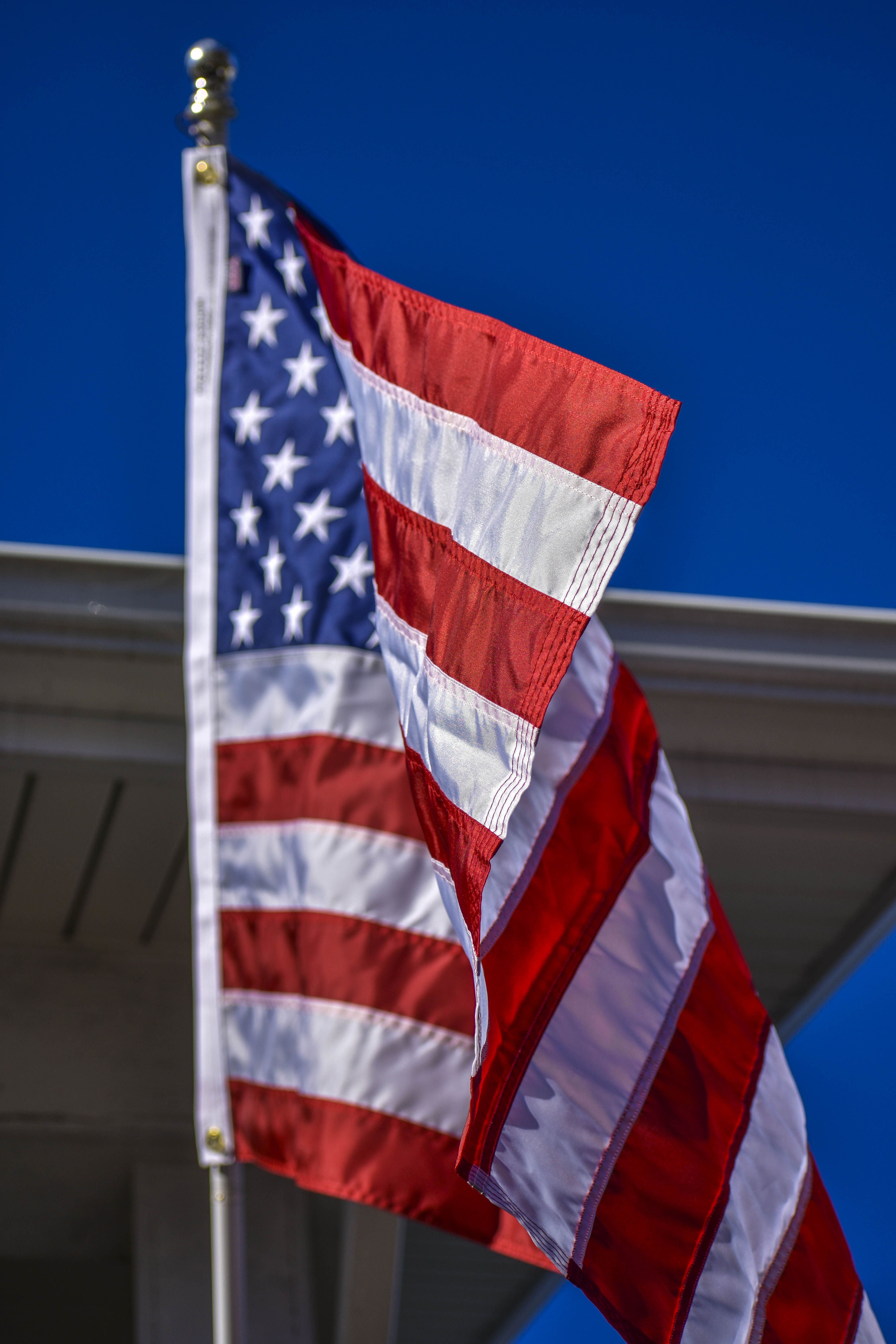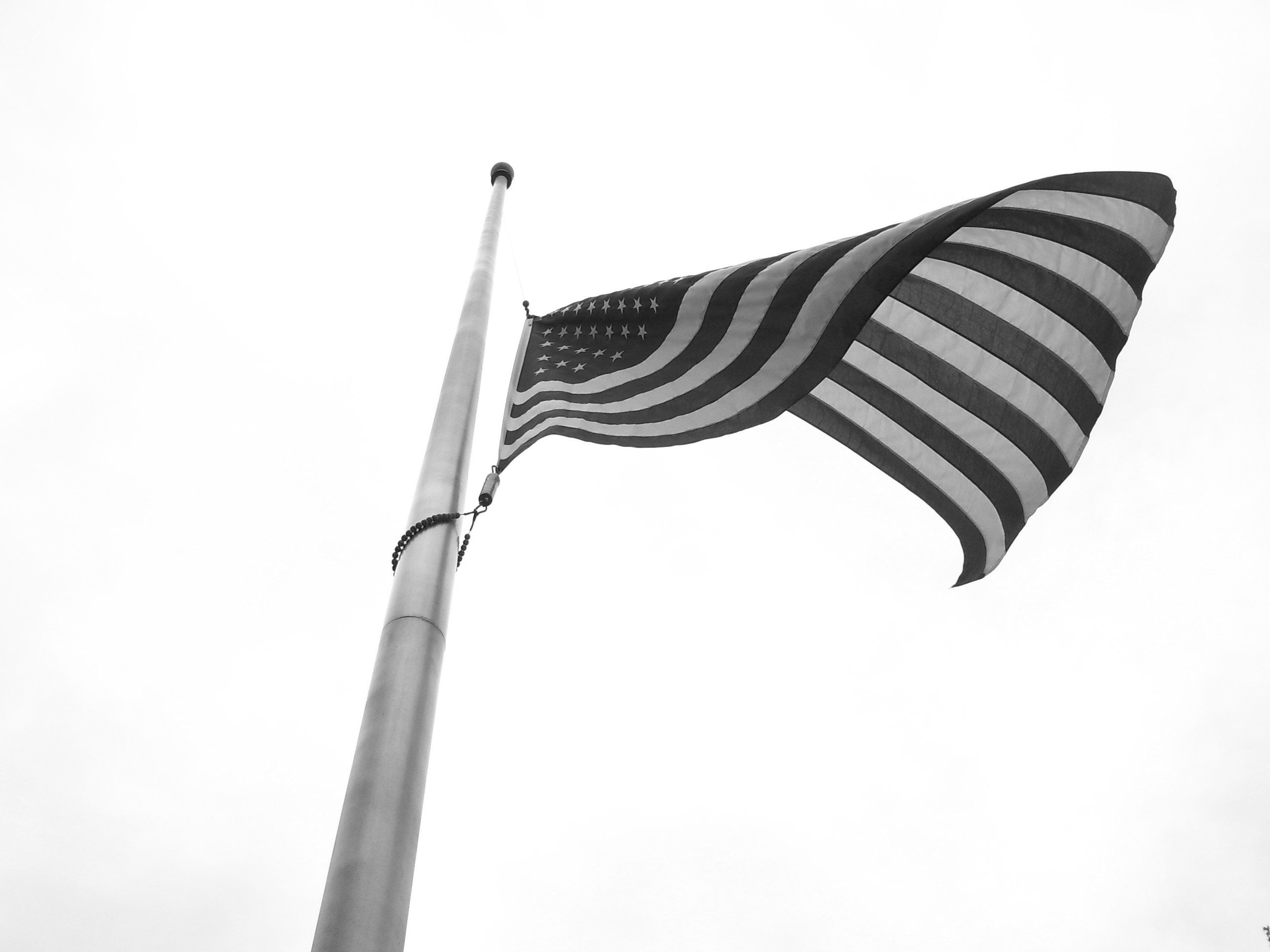American Flag Etiquette
American Flag Etiquette
Everything You Need To Know!
Established in 1923 and codified into law in 1942, the U.S. Flag Code outlines the standards for respectfully displaying and caring for this iconic emblem. The American flag we love here at Gettysburg Flag Works has been give many guidelines over the years to honor it and create a uniform way of using it in various settings.
Here is a complete guide to everything you need to know about American flag Etiquette.
The Origins of US Flag Etiquette
The U.S. Flag Code outlining the laws regarding the flag was first put into effect during World War II. It was originally outlined in 1923 by the American Legion and other organizations. Although it is made up of laws, a person generally cannot be prosecuted for breaking them. This is primarily due to a person's right to free speech.
Several notable cases have tested this, however. One of the most prominent cases occurred in 1984, during the Republican National Convention. During the Convention, which took place in Dallas, Texas, an was burned during a protest by a man named Gregory Johnson. This act defied a Texas law that states no flag of state or national origin may be desecrated. Johnson was prosecuted for the burning and found guilty.
In 1989 the judgment was overruled by the U.S. Supreme Court on the basis that Johnson's First Amendment rights were being violated by the decision. In protest of this decision, Congress made an attempt to pass a law that would make it illegal to desecrate an American flag. Known as the Flag Protection Act of 1989, it was also found to be a violation of one's right to free speech.
Core Principles of The US Flag Code

Here are five key components of the U.S. Flag Code:
- Pledge of Allegiance & Manner of Delivery (Section 4)
- Display and Use of the Flag by Civilians (Section 5)
- Time and Occasions for Display (Section 6)
- Position and Manner of Display (Section 7)
- Respect for the Flag (Section 8)
This section outlines how the Pledge should be recited—with individuals standing at attention, facing the flag, and placing the right hand over the heart—which reinforces the flag’s role as a symbol of national unity.
This part codifies the customs and rules for how civilians should handle, display, and use the flag. It provides a framework for respecting the flag through proper behavior, even though it is largely advisory rather than enforceable.
It specifies when the flag should be raised and lowered—for example, typically from sunrise to sunset unless properly illuminated—and identifies special days (like Independence Day and Memorial Day) when its display takes on additional significance.
This section sets guidelines for the proper placement and arrangement of the flag in various contexts, such as during parades, on flagpoles, or when displayed with other flags, ensuring that the U.S. flag is always given a position of honor.
Emphasizing that no disrespect should be shown to the flag, this portion outlines unacceptable uses (for example, using it as apparel or letting it touch the ground) and establishes that a worn flag should be retired with dignity—preferably by burning it in a respectful ceremony.
Want to read the entire US Flag Code? Here is the full Flag Code breakdown of ALL of the standards that people are expected to follow.
Displaying the American Flag

There are many guidelines to follow when it comes to properly displaying your flag indoors and outdoors.
Here are some of the situations you may find yourself in when displaying your flag:
When you have another flag on same staff - The U.S. flag should be above all other flags.
When grouped with other flags - The U.S. flag must be on its own right. Flags of other nations are flown at same height.
When Marching - U.S. flag to marchers right (observer's left).
When on a Platform for a Speaker - The flag must be above and behind the speaker. If mounted on a staff it is on the speaker's right.
When hanging over a street - The Union (stars) must face north or east depending on the direction of the street.
For specific outdoor display rules check out this page
Make sure you never let the flag
- fly upside down (exception for emergencies)
- carry other things in it, or be carried in a flat way
- be used as cover from weather
- be marked up with sharpie, paint or any drawing utensil
- touch the ground for any purpose
- be worn as clothing
- get stored in a dirty location
For specific Indoor display rules check out this page
American Flag Etiquette for the US Military
The military must follow certain additional etiquette requirements when dealing with the flag.
During the national anthem or during ceremonies in which the flag is present, military personnel must perform a military salute while in uniform. People are also allowed to perform a military salute even when they are not in uniform. Military personnel are also authorized to wear a permanent flag patch on their uniforms. It must be sewn on the right shoulder seam. Because it is on the right sleeve, the flag is worn in reverse, or backward. This is done to give it the appearance of "blowing in the breeze" when the service person is in motion.
Ceremonial practices involving the flag extend beyond saluting and uniform adornment. During parades, official ceremonies, and memorial services, strict protocols govern how the flag is displayed, handled, and, when necessary, retired. For instance, when the flag is carried in a formation or passes by a military unit, every individual is expected to render the appropriate salute or stance of respect. At military funerals, the flag is draped over the casket—a powerful tribute to the fallen—while honor guards meticulously ensure that every gesture and movement is done to perfection.
Etiquette for Old, Dirty or Damaged American Flags
Over time one's flag may become dirty, torn, or otherwise damaged. A dirty may be cleaned from time to time with mild detergent before it is rinsed completely. To care for an , the services of a reputable dry cleaner is recommended.
If the flag is damaged, consider the location and whether the damage can be mended. If it is possible to mend the damage, and it is in a location that will not be visible when the flag is flown, then it is acceptable to make the repair. If the damage to the flag is extreme and in a location where it would be impossible to hide the repairs, it is best to discard the flag in any of these preferred ways.
The should never be thrown away when it is damaged beyond repair. Instead, the recommendation is to destroy or discard it in a way that is dignified and worthy of its importance.
The preferred way to destroy a ruined flag is by fire. The fire, however, must be hot enough to completely burn the flag, which should be appropriately folded prior to being placed in the flames. This, however, may not be safe or even legal depending on where a person lives.
Another acceptable solution is to take the flag to the local Veterans of Foreign Wars (VFW) post, which will accept and properly dispose of the flag.
You can learn more about options for retiring and disposing of American flags properly here.
Show Your Pride By Following US Flag Etiquette
The is universally recognized as a symbol of strength and pride. Because of this, U.S. citizens will want to care for and display it in a way that reflects its importance. This is done by treating it with respect and care. By understanding and following the laws associated with flying the national flag, people can show their pride in their country.
Looking for additional information about American flag etiquette? The following resources are a great place to start:
For more information about U.S. flag etiquette, please review the following links: